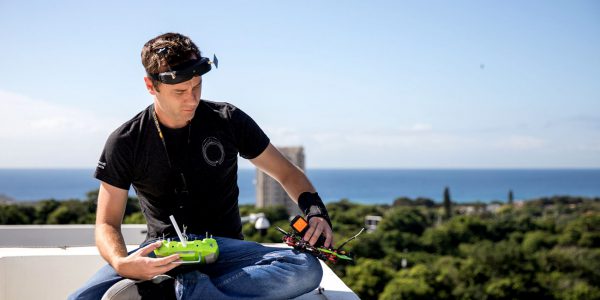Jason Cross – Software Engineer, Derivco Durban
For a man with many hobbies, I was introduced to a new one by my colleague, Senior Developer at Derivco Durban, Ross Kelly. This one, has by far, been the most fascinating, he showed me the art of drone flying.
Now in my mind, before I was familiar with any intricate details, this always meant buying a drone from your local store for an insane amount of money. I thought it would be something I would get minimal use out of, taking a few videos every now and then. I could not have been more wrong. What he showed me was spectacular: drone racing, freestyle flying, and cinematography. These were all so exciting and fast-paced, every minute of flying was an adrenaline rush.
When I knew I wanted to fly, I did a ton of research. I delved deep into videos, spec breakdowns, build guides, and I found many YouTubers that enjoy this hobby almost just as much as I do. I was hooked and I hadn’t even started yet. Eventually, I took the plunge, I ordered my 1st set of drone parts and I’ve been doing it as frequently as possible ever since. There is no feeling like being hundreds of meters in the air while looking out from the drones perspective, the adrenaline rush is unbelievable.
I currently own 5 drones, reason being:
- 2 Freestyle drones (In case one breaks or I hit something while out flying)
- 1 Race drone (In progress of being put together)
- 1 Mini Racer (This is loads of fun for underground parking lots)
- 1 Micro drone (This was what I started with and allowed me to fly around the house)
For those who would like to get into this sport/hobby, there is a variety of ways to go about doing that. I personally would recommend the following:
Step 1
Buy a radio.
This can be picked up for fairly cheaply and if you decide its not for you then not much was lost.
Step 2
Buy a simulator.
There are a few of these out there, but I would recommend DRL Simulator on Steam. It’s a cheap purchase and will definitely give you a good idea of what the real thing feels like. This way you can improve your skills or once again if you decide its not for you then not much was lost.
Step 3
Pick a drone.
Now that you definitely want to get into it, we can get to picking a drone. I would highly recommend building your own for the reason that when something goes wrong or you break something, you can repair it yourself.
However, for completeness, there is a wide variety of pre-built drones that can be ordered as well. I have nothing against these and I would happily buy one now that I know how they work inside and out.
Step 4
Practice.
If via simulator or flying your new drone just take it slow and easy, build the muscle memory. Most of the flying should become instinctive after some practice. (I personally did about 10 hours on the simulator before getting into the air).
Durban hosts a fun fly race event on the last weekend of every month where there are about 30 people attending every time. If you follow the FPV Drone Racing Facebook page, you will be able to stay in the loop with regards to when and where these events are.
In South Africa there are a few online stores that allow you to buy both pre-built and parts for almost any drone type. The main ones we use are:
https://www.rcworld.co.za/index.php
There are also many international sites that have a massive variety of drones and parts, the world is your oyster.
For any additional info, or if you are just interested in drones and drone racing, please feel free to contact me through my YouTube channel here.

